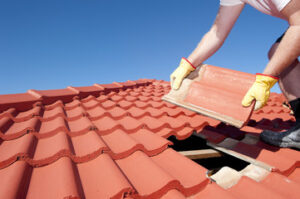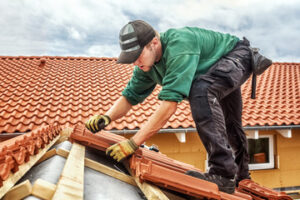Roofing contractors must be fully aware of the local laws and building codes in their specific area. This ensures they can provide you with a complete roofing contract that clearly states the type of materials used, warranties included, and the estimated duration of the project. Contact Roofing Company Woodbury TN for professional help.

Besides, they are able to work fast in the event of a roofing emergency. They can respond quickly, process paperwork, and document information for insurance claims.
1. Local Expertise
When choosing a roofing company for your project, it’s important to select a local contractor that has in-depth knowledge of the regional climate, weather patterns, and environmental factors that may affect the longevity of your roof. Local contractors are also familiar with local building codes and regulations, ensuring that your roofing project meets all necessary requirements. This minimizes the risk of fines and other legal issues later on, saving you time and money.
In addition, local roofing companies are more likely to be available for follow-up services and inspections after the project is completed. They can help you understand the pros and cons of different roofing materials and answer questions about local permitting requirements and roofing material warranties. They can also provide references from previous clients and visit past projects to assess the quality of their work.
When evaluating a local roofing contractor, look for one that has a strong reputation in the community and is committed to excellent customer service. You should be able to count on them for ongoing maintenance, 24-hour repairs, and periodic inspections to prevent damage and improve the performance of your roof. Additionally, they should be able to respond quickly to any questions or concerns you have throughout the process.
Before hiring a roofing company, it’s important to request detailed quotes from multiple contractors. This will give you a clear understanding of the scope of work and costs involved, allowing you to make an informed decision. The quote should include a breakdown of materials and labor, as well as an estimated timeline for completion. In addition, you should always get everything in writing, and avoid relying on verbal agreements.
A good roofing company will have a good working relationship with local suppliers and will be able to obtain high-quality roofing materials at competitive prices. They will also have access to the latest roofing technology, including energy-efficient options. Lastly, they will be able to offer you the best warranty and workmanship. A reputable local roofing company will also have manufacturer certifications, which means they have been trained on the specific products that are available in their area.
2. Reputation
As a roofing company, your reputation is one of your most valuable assets. It provides a glimpse into the satisfaction level of your previous clients and, ultimately, the quality of your work.
A stellar reputation tells your ideal prospects that you’re a professional and trustworthy roofing contractor. It also indicates that you consistently evaluate your services and implement coherent improvements, which attracts and retains customers.
The reputation of a roofing company isn’t simply about how long it has been in business or how many references and images it has on its website. The most important factors are whether the roofer has a good track record of satisfied customers, as well as their financial stability. You can find out the latter by examining the company’s years in business, their financial performance, and their relationships with suppliers and subcontractors.
It’s also helpful to ask for referrals from family, friends, and colleagues. You can also search online for reviews and testimonials from past clients. Online reviews offer unfiltered insights into a company’s performance and give you a chance to gauge how happy past customers were with their experience. This information will help you choose the right roofing company for your next project.
3. Warranty
Roofing warranties protect homeowners from significant repair costs, as well as the risk of costly unforeseen problems caused by defective materials and poor installation. The right warranty will provide peace of mind and enhance home resale value. However, it is important to understand how different roofing warranties function and what they cover before signing a contract with a roofer.
Manufacturer Warranties
Often offered by shingle manufacturers, these warranties cover the cost of replacement materials if your roof fails due to manufacturing defects or natural deterioration within a specified timeframe. However, these warranties do not include the labor needed to replace the materials or reinstall the existing roof. Therefore, it is essential to choose a roofing company that offers a complementary workmanship warranty.
Contractor Workmanship Warranty
Many roofing companies offer a workmanship warranty to cover the installation of your new roof. These warranties typically range from two to 10 years and protect you from any errors in workmanship that may cause damage or leaks. Duval Roofing, for example, has one of the longest contractor warranties in the industry at 10 years and covers both material and labor. However, like all warranties, there are exclusions.
These exclusions may include issues caused by extreme weather events, hail, or any damage that isn’t reported immediately to the roofing company. Additionally, some manufacturers require a thorough inspection process, and others will only honor the warranty if you adhere to specific maintenance schedules.
Homeowners seeking additional protection should consider a comprehensive manufacturer warranty in addition to the roofer’s workmanship guarantee. These extended warranties can offer significant protection against the high costs of repairing or replacing a roof and increase your home’s resale value.
These warranties are more expensive than standard manufacturer warranties but cover many of the same issues as a roofer’s workmanship guarantee. They also often include coverage for a full roof replacement in the event of a failure, and they are usually transferable to the next homeowner. As with all warranties, it is crucial to read the fine print and to know what’s covered before you sign a contract.
